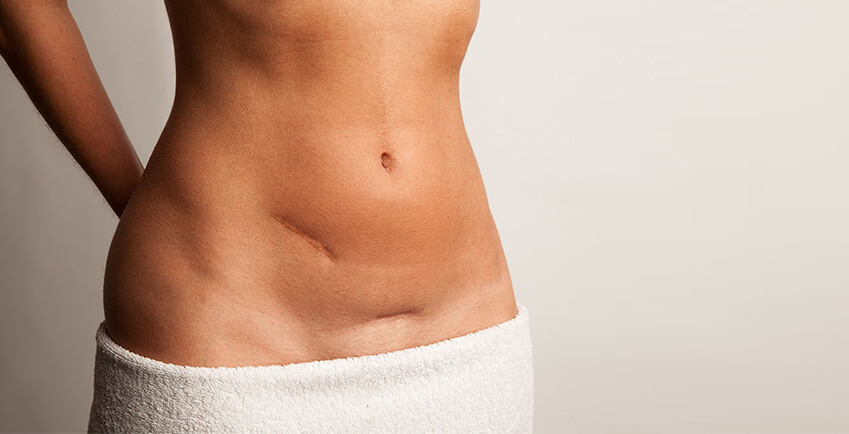Abdominoplasty is a very common surgery that aesthetic plastic surgeons are performing. The procedure has risks and benefits that we are all aware of. An experienced plastic surgeon is able to control the procedure and avoid complications to the best of his or her capabilities. Complications like haematoma, seroma, infection, skin loss are reducing and there are many surgeons who have minimal complications.




Abdominoplasty scars although are not necessarily a complication but a “side effect” that most patients do not like. The scars can be hyperpigmentted or hypopigmentated, hypertrophic or hypotrophic, and stretched scars in the lower abdomen. The scar around the umbilicus is also an issue, apart from the above category, the scar can have constricting effect that sometimes causes severe stenosis and occasionally causes “ buried umbilicus”.
The factors that play role in scarring are not necessarily depending only on the Fitzpatrick skin type, but several factors are involved. Infection, wound gaping and skin loss causes worst form of scarring and should be avoided by all means. Excessive tension due to overexcision of skin is a significant cause of scarring and often results in hypertrophic scars, stretched scars or migrated scars. Other causes that affects overall quality of scars include, fat necrosis, suture granuloma or spitting, skin inflammation due to dressings, excessive use of medicaments etc
So how do we get a better scar in abdominoplasty surgery? First of all the indication for abdominoplasty has to be ideal to justify the scar in comparison with the overall appearance. Extensive flabs, poor quality skin with stretch marks, severe diverfication of recti definitely qualifies for a tummy tuck. Skin sagging with reasonably good quality skin, large amount of visceral fat, mild diverification may not be ideal for an abdominoplasty procedure as the resultant scar compromises the outcome.
Following are the Key steps for a good scar in abdominoplasty-
- Placement of incision- needs to be as low as possible in the central part and laterally depending upon type of undergarment patient’s wear. It is common to have lateral part of scar migrating above the undergarment.
- release the abdominal flap adequately so it easily advances, yet keep key perforators intact for flap vascularity. Adequate Liposuction helps release and advance the flap. Avoid skin necrosis and deep fat necrosis as both will lead to poor scarring.
- appropriate skin excision is extremely important, flexing the OR table is a very common practice, although it allows complete closure but shortens the skin of abdomen and that is compensated by scar stretching or migration. The upper abdomen should have enough skin to drape the abdomen in order to have a decent bikini line scar.
- Fixation of flap to scarpas fascia will ensure that the scar is fixated in the lower abdomen and it does not migrate or stretch excessively.
- Layered closure will help distribute the tension, but avoid multiple interrupted sutures particularly with vicryl as they form granulomas and extrude causing wound distrution.
- Gentle handling of skin edges reduces skin inflammation and thus hyperpigmentation.
- Postoperative wound care on a regular basis will help improve the quality of scars.

Dr. Sanjay Parashar
CEO & Director – Consultant Plastic Surgeon & Laser Specialist
DNB (Plast), MCH (Plast), FICS (Plast),
Fellowship Plastic & Craniofacial Surgery (Australia)

